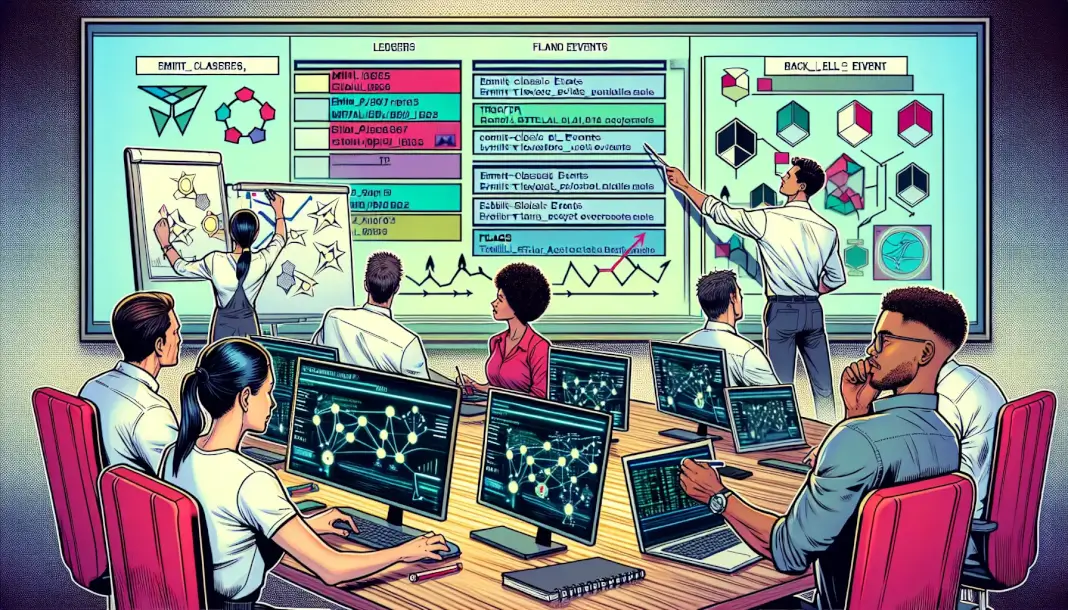KEY TAKEAWAYS
- Stellar’s Protocol 23 introduces CAP-67, enabling event emission for both new and historical ledgers, crucial for comprehensive data streams.
- Providers must opt in to the new event emission feature by configuring their systems to avoid missing historical operation data.
- Operators have three configuration options, with full events support and full history re-ingestion recommended for complete data tracking.
- The upgrade supports enhanced tracking of all operations, including pre-Protocol 23 events, vital for accurate analytics and balance computations.
Stellar’s upcoming Protocol 23 is set to introduce significant changes to how events are emitted from past ledgers. This upgrade, known as CAP-67, will allow developers to configure the protocol to generate events not only for new ledgers but also for historical ones. This capability is particularly important for providers seeking a comprehensive unified events stream, as they will need to re-ingest the full history with two new core flags enabled.
According to the announcement, the new protocol will emit new event data in the TransactionMeta for past ledgers. This feature is crucial for services and tools that store full Stellar history for end-users, such as wallets, exchanges, analytics platforms, or custom indexers. Providers must opt in to this feature; otherwise, they risk missing classic operation movements that occurred before Protocol 23.
Configuration and Options for Event Emission
To support the new functionality, operators must configure their systems by adding specific settings to their stellar-core configuration files. By default, both flags—EMIT_CLASSIC_EVENTS and BACKFILL_STELLAR_ASSET_EVENTS—are turned off. Operators must explicitly enable these flags to opt in:
# in your stellar-core.cfg or stellar-core.conf
EMIT_CLASSIC_EVENTS: true
BACKFILL_STELLAR_ASSET_EVENTS: true
Three options are available for event emission:
1. **Partial Events Support (not recommended):** Both flags are off, resulting in only Soroban events being emitted. Classic operations are excluded, and tracking movement of value through events is not possible.
2. **Full Events Support; Partial History:** Enabling EMIT_CLASSIC_EVENTS while keeping BACKFILL_STELLAR_ASSET_EVENTS off allows for a unified stream from Protocol 23 onward, but without historical data.
3. **Full Events Support; Full History (recommended):** Enabling both flags provides a complete unified stream for every ledger from genesis to present. This option requires full-history re-ingestion and allows for accurate computation of account balances, circulating supply, and other token analytics.
Implications for Stellar Operators
Operators of RPC nodes, Horizon, or Galexie will find support for the new TransactionMetaV4 included with the protocol upgrade. The recommended configuration, which involves re-ingesting full history, unlocks the ability to track every mint, transfer, burn, and clawback operation, including those from pre-Protocol 23 classic operations.
For more detailed information on CAP-67’s design and the full Protocol 23 release, interested parties can refer to the official announcement.
Why This Matters: Impact, Industry Trends & Expert Insights
Stellar’s Protocol 23 is introducing CAP-67 to enable retroactive event emission for past ledgers, allowing developers to generate events for both new and historical data. This change is critical for providers needing a comprehensive events stream.
A recent industry report highlights the complexity introduced by retroactive event emissions in blockchain analytics. These emissions can obscure the true timeline of on-chain interactions and complicate data accuracy. This aligns with Stellar’s efforts to enhance data handling through CAP-67, which will streamline historical data processing and improve asset tracking.
Insights from industry experts suggest that the Protocol 23 upgrade, including CAP-67, is expected to drive broader network upgrades and ecosystem scalability. This supports Stellar’s initiative to improve data accuracy and developer functionality, potentially increasing demand for its blockchain solutions.
Explore More News:
Disclaimer: The views expressed in this article are those of the authors and do not necessarily reflect the official policy of CoinsHolder. Content, including that generated with the help of AI, is for informational purposes only and is not intended as legal, financial, or professional advice. Readers should do their research before taking any actions related to the company and carry full responsibility for their decisions.

